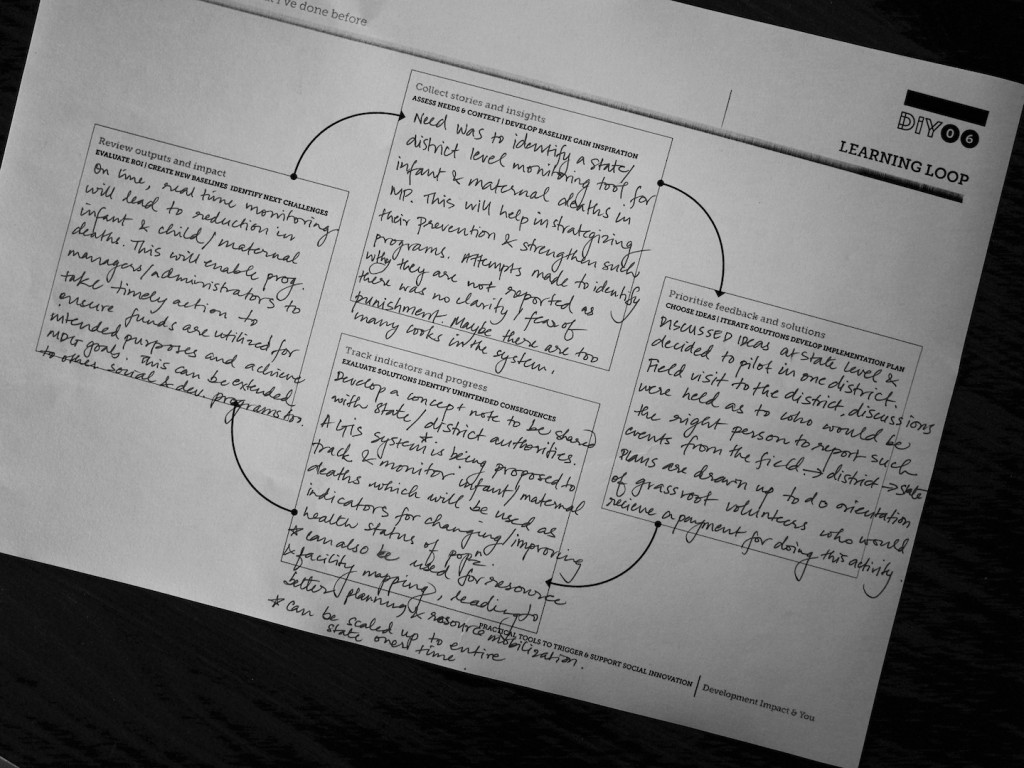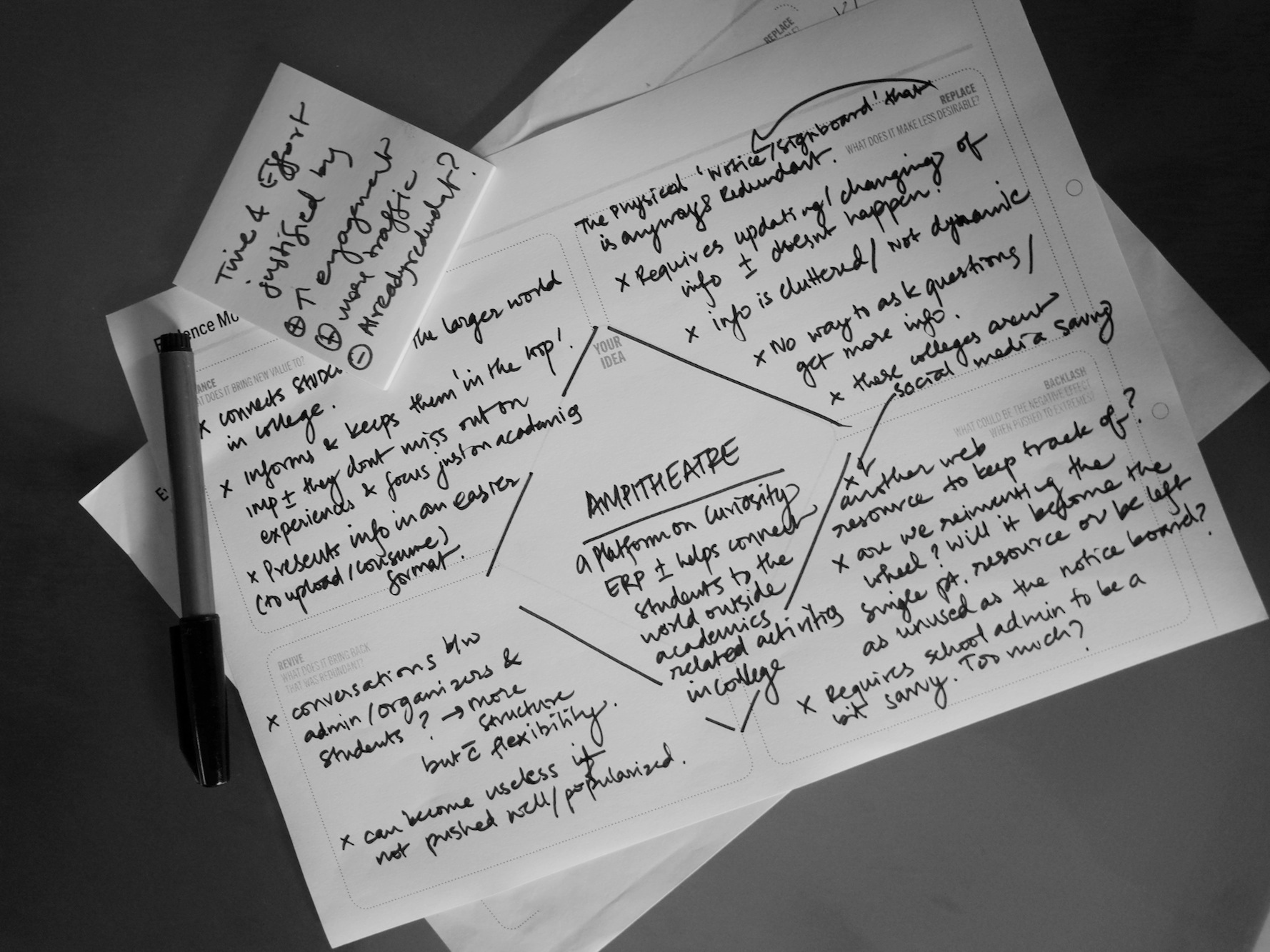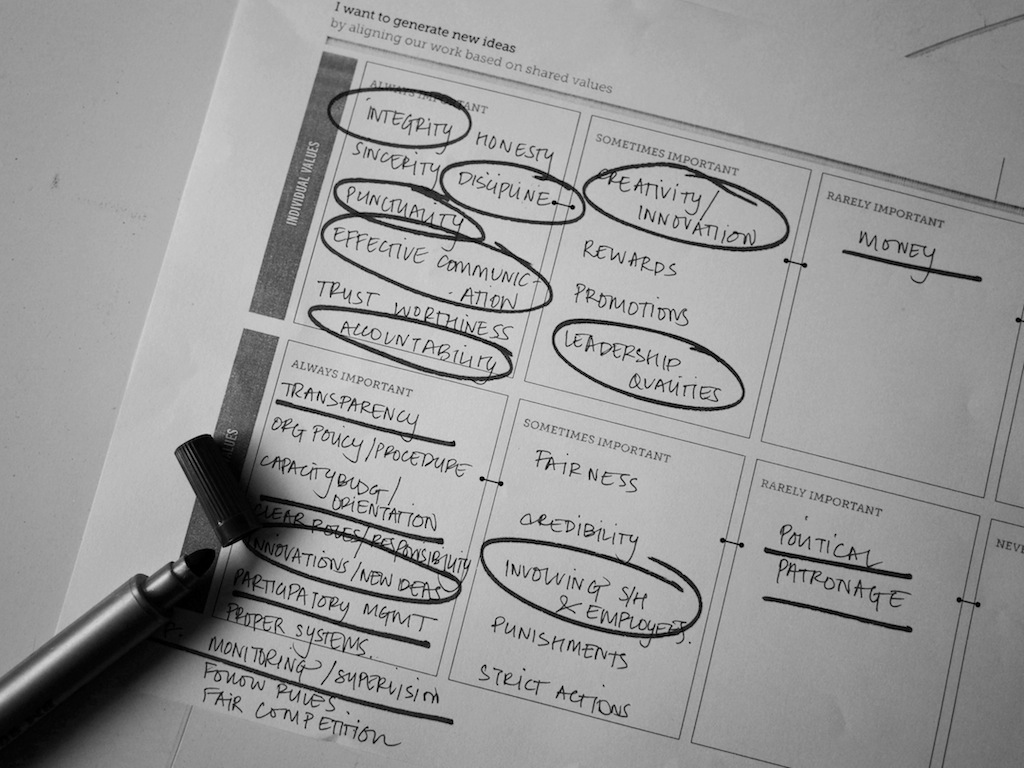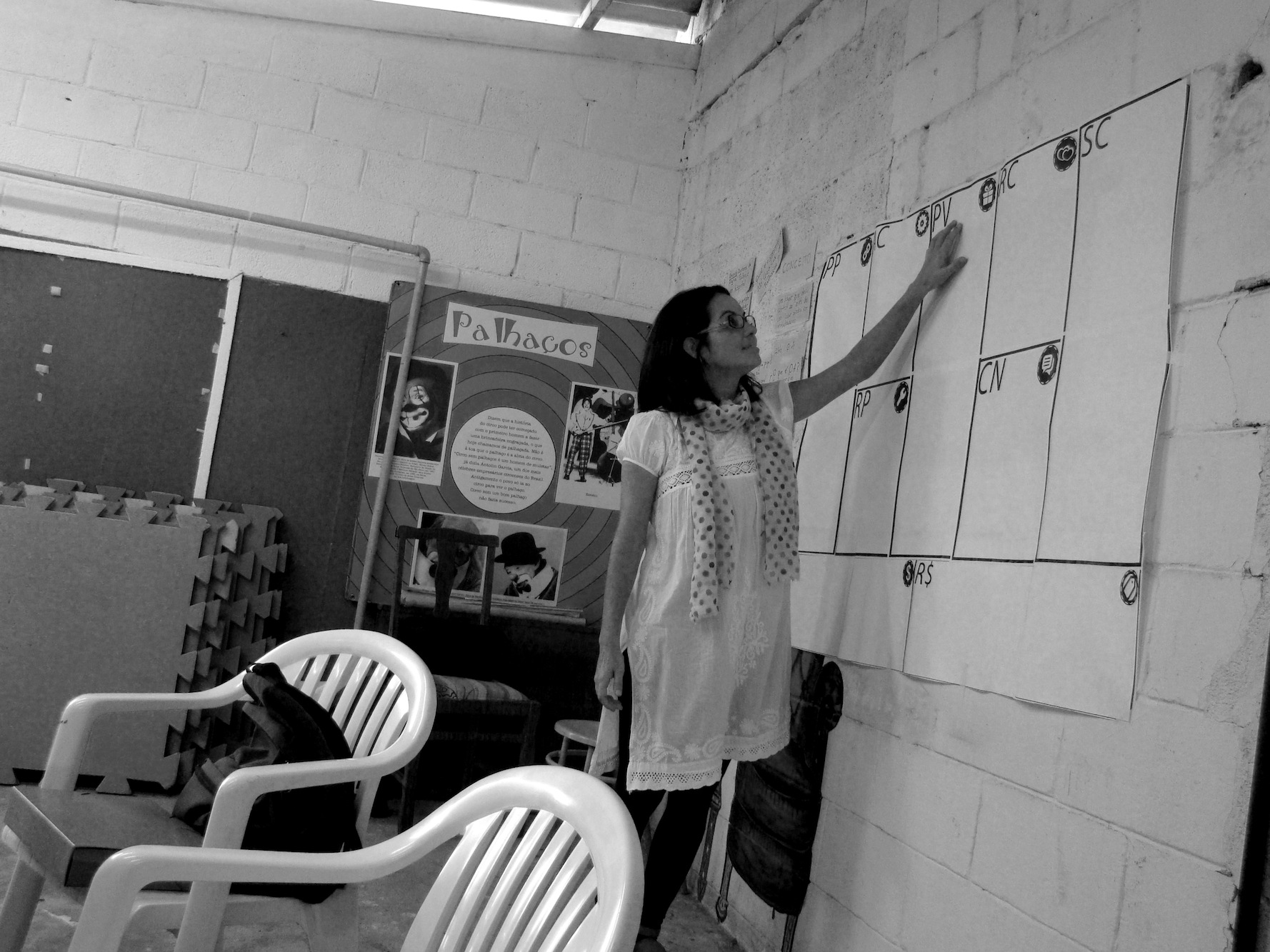
A learning loop plan for the state infant and mother health and nutrition programme managed by MPTAST.
Problem
I head the MPTAST that gives technical assistance and management support to Government of Madhya Pradesh, a central Indian State, covering the areas of Health and Family Welfare (Public Health), Women Child Development (Nutrition) and Panchayati Raj and Rural Development (WASH).
The problem I was trying to tackle is that of under reporting/non-reporting of maternal and child deaths, which are crucial social indicators of Public Health & Nutrition. This under reporting/ non-reporting leads to an even bigger problem of hampering corrective measures that could actually help reduce the numbers of maternal and child deaths.
Why and How we used the tool
I used the Learning Loop with the participation of all the stake holders involved in finding a solution. The Monitoring and Evaluation (M&E) specialist along with my service delivery personnel visited one of the pilot districts to find out the possible channels for reporting the deaths of mothers and children more quickly. This was discussed with various stakeholders – grassroots health care workers, village level volunteers and the village level Nutrition workers to establish their awareness levels and the reasons for not reporting these cases.
Results of using the tool
We then worked with the MCTS (Mother & Child Tracking System), which is an online monitoring software, developed by Government of India with an objective to track the different services being provided/ to be provided to a pregnant mother right from conception till when the baby is one year old. The problem and our learnings from the pilot district was then discussed with the District health authorities who agreed to try out a new system. The new system was also proposed to the state leadership, who readily agreed to it for monitoring maternal and child deaths. This would help in understanding the intra and inter districts differentials and the factors that possibly contribute to this phenomenon and there by alert the authorities for taking timely action. This is a good tool that spells out the inter relatedness of a social phenomenon and how to address them in a very succinct manner. One can use it literally for any social indicator that requires a innovative solution.
We will be rolling out the concept very soon and are in the process of refining the concept for buy-in from the State government, based on the pilot results from one district.
]]>

The various dimension of building partnerships for the MPTAST programs.
Problem
MPTAST (Madhya Pradesh Technical Assistance and Support Team) is a part of the MP Health Sector Reforms Project (MPHSRP) and supports the State Health department in achieving milestones for improved health, nutrition, water, sanitation and hygiene services in 16 identified, underserved districts in the state of Madhya Pradesh, India.
The project anticipates that by 2015, Madhya Pradesh families and communities will benefit from an integrated package of high-impact and high-quality health services delivered in a coordinated, sustainable and cost-effective manner and requires partnering with several stakeholders (operating at a micro and macro scale) to help achieve this impact.
We are currently in the process of identifying various partners that will work in 8 districts (serving a population of roughly 72 million people) on various aspects of the program :
- NGO Partners who are meant to carry out program evaluations in the form of baseline and mid term research and an impact assessment at the end of the project.
- Capacity building NGOs who develop and modify Participatory Learning Action (PLA*) modules and are also responsible putting a management information system in place.
- An implementing partner for rolling out the PLA modules.
- An agency to provide technical support to government counterparts, i.e. the State Livelihood Mission (SRLM), and help them identify a HR agency to recruit and manage the HR on behalf of the government.
Why we used this tool
Bringing these (afore mentioned) partners with vary levels and varying nature of involvement has proven to be a real challenge for us. Hence we used the Building Partnerships tool to map out how to proceed with engaging with these four specific stakeholders, even before they have been identified.
What were the results of using this tool
This tool analytically separated several related concepts/dimensions to forging partnerships which needs to be kept in mind while building them. It becomes very important to recognise these finer points so that none are missed out however small it may be.
]]>

Using the Theory of Change and Causes Diagram tool with the auxiliary nurse midwife, block project manager and multi purpose worker in the village
Problem
I have been working with fhi360 in assisting the Government of Madhya Pradesh (MP) to implement MPHSRP (Madhya Pradesh Health Sector Reforms Program) for the last one year.
Madhya Pradesh, a state in central India has very high infant and mother mortality rates, compared to the national average. Our programme helps strengthen the system and we work closely with the Health Department, WCD (Women & Child Development) & PHED (Public Health Engineering Department) departments aiming to reduce MMR (Maternal Mortality Ratio), IMR (Infant Mortality Ratio), Malnutrition & TFR (Total Fertility Rate) in the state of Madhya Pradesh in India.
MCTS (Mother & Child Tracking System) is an online monitoring software which has been developed by Government of India with an objective to track the different services being provided/ to be provided to a pregnant mother right from conception until the baby turns a one year old.
The tracking system still needs to be worked upon further before it can be implemented.
Why we used the tool
My team mates and I used the Theory of Change, Causes Diagram in one combination and SWOT Analysis, Question Ladder and the Critical Task list in another combination (see page ..) Our aim is to strengthen the usage of the MCTS software and also re-defining roles, incentives and contingency strategies for all the people and stakeholders responsible for its functioning. We did this by using a set of tools to first re-visit and try resolving the problem at hand, and then use another set of tools to identify potential team members and create a critical pathway to implement our solution.

Final Theory of Change worksheet that culminated from the group exercise
How we used the tool
I used these tools in Jabalpur District in Madhya Pradesh as a pilot. First, I explained the purpose of doing the whole exercise to my team by helping them understand:
- exactly what is going on
- who are the people involved and what their roles are, and
- understanding the bottlenecks that we should work towards to solve the issue.
We then used a combination of Theory of Change and Causes Diagram.
Theory of Change
To give a clear idea on what is planned for change – i.e. updating the service in the MCTS system and to make the team understand how affects their routine work, how it will help the community, how it will help the Programme Manager for decision making and how it is going to impact the overall Infant Mortality Rate over a period of time.
Causes Diagram
Identify the bottlenecks which are hindering the MCTS service from updating. To learn from all the root issues and devise a better solution accordingly.
Results of using the tool
The Theory of Change tool helped the team understand that even their role as a grassroot worker can contribute to a larger change over time. This was key to achieve any success for the programme helping create an attitude change towards their work. The tool also helped iron out inefficiencies in the current system in a holistic manner.
The Causes Diagram helped the team realize that while there exists a messy array of convoluted issues, distilling it to the one or two more important and actionable problems was a better strategy. This tool helped the team understand and define the cause of current inefficiencies in a structured manner and helped them identify what to work towards to fix a core problem.
]]>
The filled out SWOT analysis sheet for a product sales at Sanergy.
I am working on a project to diversify the income streams of micro-entrepreneurs in the community in which we work. I am actually well into this project and I wasn’t attempting to solve a problem, per say, but I thought that some of the tools could help me think through the next few stages of it. I used the SWOT Analysis tool as a self evaluation exercise, but decided to change it a bit, by pretending I had filled it for my project 2 months ago.
This tool worked well and helped me view my project as holistically as possible and I think it would have been useful if I used it in the beginning of the project.
]]>
Workshop with students to identify problems and relevant causes for under participation of school students in local sports programmes
Problem
Development Fund of Children’s Sport Under the Ministry of Public Education in Uzbekistan was concerned that despite a large-scale investment programme into sports complexes, the use of these facilities has been below expectations, especially outside Tashkent (the capital of Uzbekistan).
The Children’s Sports Fund is particularly concerned about the participation of girls from rural areas in sports, who often miss out on the benefits of doing sports due to a lack of parental awareness, encouragement or even permission. So, despite major investments into infrastructure and programmes guaranteeing free access to sports facilities, how do we get people to use the facilities?
Why we used the tool
We organised a workshop on social innovation with young citizens – students from a local partner university, focused on the ‘sport for social inclusion’. Promising project proposals that come out of this, were eligible to be considered for a small grant award of up to $1,500. While making these project proposals, we used a number of tools such as Target your Audience, Personas to think about the users and Problem Definition, Causes Diagram to think about possible problems and solutions.
The tools were chosen along three main criteria:
- suitability for a small-scale volunteer project without commercial elements,
- applicable for an early, pre-prototyping stage of the social innovation process (emphasis on ideation, problem definition, working out users)
- can be carried out in less than an hour in a classroom/workshop setting.

How we used the tool
We used Problem Definition and Causes Diagram in a workshop to help encourage students think more broadly about the problem, and possible solutions. However, it was only after encouraging students to ask successive ‘why’ questions that the exercise really led to new insights. Often they would jump ahead without identifying more nuances and identify ‘economic problems’ or ‘traditions’ as second-order causes. Once encouraged to be more specific however, they found interesting and sometimes unexpected causes for low participation in sports, including for example the fear of injuries (in conjunction with low standards of health services) or lack of street lighting (in conjunction with safety concerns).
Results of using the tool
The Problem Definition tool aids to define and to realise more deeply a certain problem and the Causes Diagram helps collect all factors and causes of a certain problem to be able to tackle it. Using the tools helped to familiarise ourselves with the problem and root out actionable causes, some of which were unexpected and new to us.
]]>
Conducting a survey within our video management and software team with the Question Ladder tool
Problem
Digital green uses ICT to curate and share best practices (in the form of videos created by agriculturists) among rural farmers in India. The databases of these farming videos are created by our internal teams and their management is the most critical part of our work. Currently we use an internally developed technology for video management, that is not very user friendly and intensive on time and effort. We were trying to design an internal survey through which we wanted to know the problems currently faced by our staff in using the current tools.
Why we used the tool
We used the Question Ladder tool because we wanted to construct some very specific questions as a warm-up and then move to open ended questions that would be complex but more revealing The responses to this activity would help the software team understand how to make the internal video management activity more effective and efficient.
How we used the tool
We used this framework in the worksheet to design questions for an internal survey that we issued to internal programme teams to assess their process of entering data, uploading videos and mapping them. It worked very well because it was straightforward and we were able to design the questionnaire at many different levels of complexity which we found opened up our line of questioning.
Results of using the tool
We were able to design our survey in a more structured manner.
Some examples of questions that we constructed are:
- Why is it important, or not important, for Digital Green to have a copy of all videos?
- In future, who might want to create collections on our website?
- Is it likely that someone might forget to link an uploaded video’s youtube id in COCO?
The Nó Cego Cia de Palhaços (’Palhaços’ translates to ‘clowns’ in Portuguese) is a group of four people who believe in the power of clown training as a healing tool for ‘a society whose greatest need is the experience of love’. They work with the Center for Psychosocial Support (CAPS), where they use the craft of clowning (and other creative psychotherapy techniques) as a restorative instrument for members undergoing mental treatment and marginalised people who are physically or emotionally unstable. Their work relies heavily on skilled group coordinators who are passionate about craft and who desire recognition through social work, but still need to be incentivised through some professional income generation.
Currently the clowns have very scarce infrastructure (such as space for physical activity, financial support and marketing resources) and while they are extremely skilled and passionate about what they do, they are slightly disheartened by the lack of ‘paid work’.
Why we used the tool
The Nó Cego Cia de Palhaços are being incubated at the SBCSol Program, where they are currently figuring out ways to broaden their avenues and resources. Though their service is well figured out, the business aspect of the palhaços’ work is still in its embryonic stages. We decided to use the Business Model Canvas tool to create a new value proposition for the clowns, one that conveys they are a professional and competitive service while staying true to their rich history and experience. We wanted to make the foundation of this business plan as participatory as possible and included as many people we could to help us build the the canvas
How we used the tool
To make it more relevant to the palhaços’, we adapted the tool and added more context specific questions to it. Then to help the ideas flow better, we broke the activity into 2 parts :
- Initial Brainstorm : We started the activity as a big group , the participants could pick any number of questions they wanted to answer, in any particular order.
- Detailing : After this first step, we put together teams of people with similar ideas and asked them to elaborated on each subject, particularly the value proposition. Breaking up into these panels helped the group create detailed content for the canvas.
Results of using the tool
The tool introduces the concept of ‘business thinking’ to people who have no prior experience as entrepreneurs. It helped the palhaços organise their thoughts and was instrumental in helping them construct concrete goals for themselves and detailing out activities needed for each stage.

The Palhaços looking at their completed canvas and figuring out next steps for their renewed business model.
Furthermore, the tool provided an accessible language for everyone, even those with lower education. Guided by the questions on the canvas, we built a very solid value proposition, which guided the development of other areas of the business model.
]]>

Target group and personas worksheets filled by the workshop participants
Problem
Development Fund of Children’s Sport Under the Ministry of Public Education in Uzbekistan was concerned that despite a large-scale investment programme into sports complexes, the use of these facilities has been below expectations, especially outside Tashkent (the capital of Uzbekistan).
The Children’s Sports Fund is particularly concerned about the participation of girls from rural areas in sports, who often miss out on the benefits of doing sports due to a lack of parental awareness, encouragement or even permission. So, despite major investments into infrastructure and programmes guaranteeing free access to sports facilities, how do we get people to use the facilities?
Why we used the tool
We organised a workshop on social innovation with young citizens – students from a local partner university, focused on the ‘sport for social inclusion’. Promising project proposals that come out of this, were eligible to be considered for a small grant award of up to $1,500. While making these project proposals, we used a number of tools such as Target your Audience, Personas to think about the users and Problem Definition, Causes Diagram to think about possible problems and solutions.
The tools were chosen along three main criteria:
- suitability for small-scale volunteer project without commercial elements
- applicable for early, pre-prototyping stage of social innovation process (emphasis on ideation, problem definition, working out users)
- can be carried out in less than an hour in a classroom/workshop setting
How we used the tool
The Target your Audience and Personas tools were helpful in making the students think about the detailed characteristics of their future users. They often talked about ‘heads of traditional families’ for example, but the tools helped them to anchor such generalisations in concrete characteristics: where are they to be found, what do they do on an average day, what concrete values do they hold, what media do they consume, what is their relationship with modern technology. We used this tool to highlight the characteristics of our target customers by ‘putting ourselves in the other person’s shoes.’
Results of using the tool
We realised that no problem can be solved without taking into consideration the personality of people, their needs and and holistic picture of their lives.
Tips for other people
- It is better not to concentrate on one type of personality for the Personas tool and instead create multiple Personas, because the problem can cover different social groups.
- Its wise to prepare and collect some data before using the Target your Audience tools in a workshop setting.

A picture of the worksheet that culminated out of the team discussion.
Problem
Teemac works with educational institutions creating products to help them modernise practices through an enterprise resource planning (ERP) platform called Curiosity, that we’ve developed in collaboration with pioneering educators.
We are currently working on a feature called Amphitheater which connects college students to extra curricular activities and events happening in their college. Right now most of the institutions we work with have a ‘age-old’ bulletin board with ad-hoc, outdated information and no one point were students or college admin can access or update information.
Why we used the tool
We have realised that are very idealistic when it comes to building features within the Curiosity platform. We usually follow our gut instinct, even when the institutions do not see an explicit value in them. For a change, we thought we would adopt a more evidence based approach before we start building the Amphitheater feature.
We used a combination of Problem definition and Evidence Planning. This was to both define and create a logical evidence based plan for problem we are trying to solve.
How we used the tool
Two of my team mates and I printed out the worksheets and sat around a table with our notes and thoughts. The Problem Definition tool only helped us articulate what we already knew. The most interesting part was the last question “Can you think of this problem in a different way? Can you reframe it?”. Sometimes you look at a problem and try solve it very linearly, this question helped us deliberate if there was a different way of looking at the problem itself.
The Evidence Planning tool was surprisingly interesting. When we started filling it out, we realised that we weren’t convinced of the evidence backing the solution as well as the impact it could create. .We ended up slightly confused about the direction and found ourselves arguing amongst each other. We haven’t found the answers yet, but its still definitely a positive outcome.
Results of using the tool
This activity made us doubt something that we were absolutely sure of creating. It helped us introspect and rethink an entire system we were going to create based on our intuition. It was a good exercise because it helped us achieve a deeper understanding of what we were trying to do.
Creating a logical evidence based plan to get buy in an institutional platform that connects colleges to its students.
]]>
A snapshot of value mapping tool filled by our team
Problem
I lead a team of professionals providing Technical Assistance and Support to the Govt of Madhya Pradesh covering the thematic areas of health, nutrition and WASH (Water, sanitation and hygiene). I feel that there are several critical issues that come in the way of effective and efficient management of service delivery, often pushing the actual goal of social development to the background. Broadly classified into two categories – individual and organisational, these issues can be notions of governance, human resource and organisational development. One of the problems we face is the resistance to change, and how the organisation is used to the ‘status quo’.
Why / How we used the tool
I used the Value Mapping tool for identifying core values at the individual and organisational level that can bring a much wanted change in the way the whole system operates. The idea was to try out ‘change management’ in the system so that the resources are used productively to deliver services like basic health, nutrition and sanitation to the people we cater to.
My team drew up an annual work plan covering human resource and organisational development dimensions Compartmentalising these values into four neat boxes is easier said than done, but in reality they all overlap both at the individual and organisational level. These values change with the personalities occupying the positions at the policy making level and the professionalism of the individual players who are responsible for driving the change.
Results of using the tool
After the exercise, the outputs were shared with the government (who we work very closely with) and we are initiating a buy in from their side.
]]>
